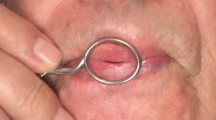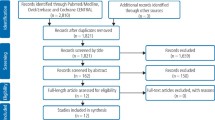Abstract
Introduction For the ambitious wind instrument player with severe malocclusion, the decision to undergo orthognathic surgery can be difficult.
Aim To qualitatively explore and reveal key aspects of considerations for and outcomes of orthognathic surgery by interviewing a group of advanced and professional wind instrumentalists.
Materials and methods One investigator, using a standardised questionnaire, interviewed seven cases. The interviews were analysed by two investigators who are knowledgeable about embouchure.
Outcomes An ideal jaw relationship is not a prerequisite to achieving a professional career in music. Complete embouchure loss after surgery can be experienced due to changes in the position of incisors, lip relationship and tongue position relative to the shape of the oral cavity and as a result of neurosensory changes. Neurosensory recovery and 'wind instrument rehabilitation' takes at least six months, which was achieved in three out of five cases. The following temporary or permanent difficulties during playing after surgery were reported: onset of notes, high notes, leaps and intervals, and stable and well-tuned sound.
Conclusion In view of the risks involved, orthognathic surgery in wind instrumentalists should only be considered when there is an (oral) health indication.
Key points
-
An ideal jaw relationship is not a prerequisite to achieve a professional career in music. Considering the risks involved, orthognathic surgery in wind instrumentalists should only be considered when there is an (oral) health indication.
-
Wind instrument players can experience a complete embouchure loss after surgery because of changes in the position of incisors, lip relationship and tongue position relative to the shape of the oral cavity and as a result of neurosensory changes.
-
The neurosensory recovery and 'wind instrument rehabilitation' takes at least six months. This was achieved in three out of five cases but, unfortunately, not in the two other cases. Wind instrument players report the following temporary or permanent difficulties during playing after surgery: onset of the tone, high notes, leaps and intervals, and stable and well-tuned sound.
This is a preview of subscription content, access via your institution
Access options
Subscribe to this journal
Receive 24 print issues and online access
$259.00 per year
only $10.79 per issue
Buy this article
- Purchase on Springer Link
- Instant access to full article PDF
Prices may be subject to local taxes which are calculated during checkout









Similar content being viewed by others
References
Van der Weijden F N, Kuitert R B, Berkhout F R U, van der Weijden G A. Influence of tooth position on wind instrumentalists' performance and embouchure comfort: A systematic review. J Orofac Orthop 2018; 79: 205-218.
Phillips W H. Orthodontics and embouchure. A case report. Br Dent J 1972; 132: 501-502.
Van der Weijden F, Berkhout F R U, Lobbezoo F. Improvement of embouchure after correction of irregular front teeth: the case of a professional French horn player. Br Dent J 2019; 226: 261-264.
Raney N A. The effects of orthodontic appliances on wind-instrument players. J Clin Orthod 2006; 40: 384-387.
Robinson S N. Orthodontic treatment and the wind instrument. Dent Update 1993; 20: 116-120.
Strayer E R. Musical Instruments as an Aid in the Treatment of Muscle Defects and Perversions. Angle Orthod 1939; 9: 18-27.
Van der Weijden F N, Kuitert R B, Lobbezoo F, Valkenburg C, Van der Weijden G A, Slot D E. Does playing a wind instrument influence tooth position and facial morphology?: Systematic review and meta-analysis. J Orofac Orthop 2020; 81: 267-285.
Testa R F. Effect of jaw-thrust instruction on trumpet performance and overjet of young players. J Res Music Educ 1974; 22: 184-197.
Mortenson G C, Kolar L W. Understanding the Procedures and Risks Involved in the Extraction of Third Molars. Med Probl Perform Artists 1988; 4: 119-122.
Verweij J P, Houppermans P N W J, Gooris P, Mensink G, van Merkesteyn J P R. Risk factors for common complications associated with bilateral sagittal split osteotomy: A literature review and meta-analysis. J Craniomaxillofac Surg 2016; 44: 1170-1180.
Zhou N, Ho J-P T F, Huang Z et al. Maxillomandibular advancement versus multilevel surgery for treatment of obstructive sleep apnea: A systematic review and meta-analysis. Sleep Med Rev 2021; DOI: 10.1016/j.smrv.2021.101471.
Alolayan A B, Leung Y Y. Longitudinal recovery pattern of neurosensory deficit after Le Fort I osteotomy. Int J Oral Maxillofac Surg 2021; 50: 1069-1074.
Rosenberg A, Sailer H F. A prospective study on changes in the sensibility of the oral mucosa and the mucosa of the upper lip after Le Fort I osteotomy. J Craniomaxillofac Surg 1994; 22: 286-293.
Baas E M, de Lange J, Horsthuis R B G. Evaluation of alveolar nerve function after surgical lengthening of the mandible by a bilateral sagittal split osteotomy or distraction osteogenesis. Int J Oral Maxillofac Surg 2010; 39: 529-533.
Baas E M, Horsthuis R B G, de Lange J. Subjective alveolar nerve function after bilateral sagittal split osteotomy or distraction osteogenesis of mandible. J Oral Maxillofac Surg 2012; 70: 910-918.
Baas E M, Bierenbroodspot F, de Lange J. Bilateral sagittal split osteotomy versus distraction osteogenesis of the mandible: A randomized clinical trial. Int J Oral Maxillofac Surg 2015; 44: 180-188.
Wijbenga J G, Verlinden C R A, Jansma J, Becking A G, Stegenga B. Long-lasting neurosensory disturbance following advancement of the retrognathic mandible: Distraction osteogenesis versus bilateral sagittal split osteotomy. Int J Oral Maxillofac Surg 2009; 38: 719-725.
Al-Moraissi E A, Ellis E. Bilateral Sagittal Split Ramus Osteotomy Versus Distraction Osteogenesis for Advancement of the Retrognathic Mandible. J Oral Maxillofac Surg 2015; 73: 1564-1574.
Osborn T P, Frederickson G, Small I A, Torgerson T S. A prospective study of complications related to mandibular third molar surgery. J Oral Maxillofac Surg 1985; 43: 767-769.
Kang F, Sah M K, Fei G. Determining the risk relationship associated with inferior alveolar nerve injury following removal of mandibular third molar teeth: A systematic review. J Stomatol Oral Maxillofac Surg 2020; 121: 63-69.
Zach L. Using a Multiple-Case Studies Design to Investigate the Information-Seeking Behaviour of Arts Administrators. Library Trends 2006; 55: 4-21.
Acknowledgements
The authors gratefully acknowledge the support of Jeroen Fennis, who helped with the imaging of Case 2. The authors are also grateful to Dewi van Stein Callenfels, who made contact with one case possible and to Romain Leleu for his permission to present his photos and mention his name.
Funding
This research received no specific grant from any funding agency in the public, commercial, or non-profit sectors. For this study, no funding was accepted, except for support from the listed institutions.
Author information
Authors and Affiliations
Contributions
All authors and the patients involved gave final approval. All authors agreed to be accountable for all aspects of work to ensure integrity and accuracy. Fawn N. van der Weijden. interviewed the patients, analysed all interviews and drafted the manuscript. Cees J. M. Hazenberg contributed three cases, analysed the interviews of the brass instrument players and critically revised the manuscript. Ronald E. G. Jonkman contributed one case and critically revised the manuscript. Sandy R. A. van Teeseling contributed one case and critically revised the manuscript. Jean-Pierre T. F. Ho contributed one case and critically revised the manuscript. Rein B. Kuitert initiated the idea, contributed one case and critically revised the manuscript.
Corresponding author
Ethics declarations
The authors declare that they have no conflicts of interest. All patients signed an informed consent and thereby gave permission to use the presented details and photographs.
Supplementary Information
Rights and permissions
About this article
Cite this article
van der Weijden, F., Hazenberg, C., Jonkman, R. et al. Is orthognathic surgery indicated for wind instrument players? A multiple case study. Br Dent J (2022). https://doi.org/10.1038/s41415-022-4292-9
Received:
Accepted:
Published:
DOI: https://doi.org/10.1038/s41415-022-4292-9
This article is cited by
-
A case series of wind instrument players with cleft lip and/or palate
British Dental Journal (2023)



